Search Results

Susanne
I am a four-time diffuse large B-cell lymphoma (DLBCL) survivor and a recent stem cell transplant (SCT) survivor. DLBCL is a type of non-Hodgkin lymphoma (NHL). My first diagnosis was in 2007, then 2012, 2013, and 2023. I received invaluable support financially from The Leukemia & Lymphoma Society (LLS). People often ask how I am so positive after all I've been through. I think we need to take whatever we are dealt and make the best of it each day. The key is a positive attitude, gratitude, and a strong support system.
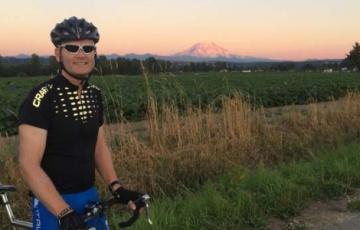
John
I've been a cancer survivor since my bone marrow transplant at Seattle Cancer Care Alliance in 2004. I have minimal side effects and continue doing what I love -- spending time with family and friends, cycling, and teaching high school photography and video production. One year after my transplant I did my first Team In Training event, a century ride in Lake Tahoe. I continued to do four more events. My high school video students put on a film festival every year to support the Northwest Chapter of The Leukemia and Lymphoma Society.

Bonnie
My dad, Larry Vogl, was diagnosed with leukemia out of the blue in November 2014. In the picture, he is with my three boys and my nephew (his four grandsons). They are the reason for the fight!
I am also the oldest of six kids, and my dad has always done and will always do anything for us - putting his kids first.
He is my inspiration for running, yet, my journey seems to pale in comparison to his. I look forward to sharing the Team In Training miles with my youngest sister Jamie, and representing our whole family in honor of our dad.
Gisenia
In October 2015, Gisenia Reyes heard the words "You have cancer." Diagnosed with acute myeloid leukemia (AML), an aggressive type of blood cancer. She immediately underwent chemotherapy treatment to save her life.
Gisenia attained remission status, however, she still had a mutation in her blood work, which could cause her to relapse.
Carson
In October 2016, after a few months of asymptomatic fevers, joint pain, and extreme irritability Carson was admitted to the University of Virginia Children's Hospital in Charlottesville, Virginia where she was diagnosed with acute lymphoblastic leukemia (ALL).
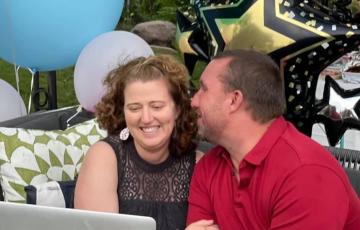
Amanda
Amanda was a Woman of the Year candidate this past spring, raising over $186,000 for The Leukemia & Lymphoma Society (LLS).
She is a multiple myeloma (MM) survivor and just received the newly approved for MM, CAR-T cell treatment, 5 days before the fundraising campaign finale.
LLS first met Amanda when she was pushed through the front doors of the office in her local region, in a wheelchair.

Matthew
Matthew was diagnosed with Burkitt's Lymphoma and Leukemia in November 2008 at just two years old. After long and difficult chemotherapy treatments, Matthew achieved remission. He is now part of The Children's Hospital of Philadelphia survivorship program. Matthew finds time for his hobbies like making crafts and running make-believe restaurants and stores. He also stays busy playing baseball, swimming, and basketball. Matthew also enjoys looking for treasure in his backyard. When he grows up, Matthew wants to be a teacher or a restaurant owner because he loves people.

Addison
Florida is my happy place. It's where I've vacationed for over three decades. And when my husband and I had kids, it became our family's happy place too. Schedules are forbidden on vacation. We tell time by the sun as we sit on the beach with our feet in the sand, watching the tide roll in and out. While on vacation, we celebrate birthdays ― and they're done up big ― because that's the only way that we know how to celebrate birthdays ― BIG.
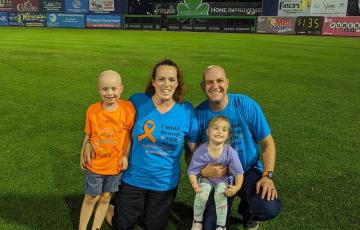
Aiden
On November 6, 2022, God spoke to me and told me to take Aiden to the hospital. He had a lingering cough and random fevers that would come and go over the month. I took my parents to Philly airport and stopped by Nemours in Wilmington. I figured they would run some tests, and I would be told he had some infection. We would get medications and be on our way. When the nurse examined him, she asked about anything else going on. I mentioned he has had a lot of bruising lately, but he does karate and is a typical boy. We looked over his whole body, and I had not realized he had so many bruises!
Other Disease Studies
Another type of study that blood cancer patients and their relatives can participate in is a nontherapeutic study. Nontherapeutic studies aren't considered clinical trials because they don't involve the study of new diagnostics or treatments for diseases. Instead, they're developed to gain a better understanding of disease-incidence patterns or the consequences of specific treatments for a specific disease.
In all cases, you should be asked to sign a consent form that defines the study's purpose and what's expected from the participants.
Stem Cell Transplantation
The goal of stem cell transplantation is to cure the patient’s cancer by destroying the cancer cells in the bone marrow with high doses of chemotherapy and then replacing them with new, healthy blood-forming stem cells. The healthy blood stem cells will grow and multiply forming new bone marrow and blood cells. There are two main types of stem cell transplantation. They are
Side Effects
The side effects of treatment for essential thrombocythemia (ET) will depend on many factors, including the type of treatment and dosage, the age of the patient and coexisting medical conditions.
Management of side effects is important. Patients should discuss any concerns about side effects with their doctor. Most side effects are temporary and resolve when treatment is completed
Treatment Outcomes
Among patients with MF, the prognosis (meaning the likely outcome of the disease) varies widely. Each patient’s risk factors are evaluated individually to determine their prognosis. However, some people with MF may survive for decades following their diagnosis.
It is important to know that outcome data can show how groups of people with MF responded to treatment in the past, but it cannot always determine how any particular person will respond. For these reasons, patients are advised to discuss information about survival with their doctors.

Charles
I was alone with my doctor in the hospital when she told me I had no bone marrow matches in the world. I cried a lot that day. I was admitted two weeks prior, after relapsing from acute myeloid leukemia (AML), an aggressive blood cancer. As a husband, father and criminal prosecutor, I’ve dedicated my life to caring for my loved ones and protecting my community. Now, leukemia was threatening my life and there was no one that could protect me from it.

Shameel
Telling a child that they have cancer and explaining what that means is one of the most difficult conversations you can have with your child.
Shameel was diagnosed with acute lymphoblastic leukemia (ALL) at age 7. As a mother, I couldn't imagine my young, courageous boy, who appeared happy and healthy, not being able to do stuff like tennis, ice skating, piano, and swimming, which he enjoyed and had mastered. It was very shocking to me, and I was in denial for almost a month as cancer does not run in our family.

Joseph
Feb 10, 2012 has forever changed our lives. Joseph was 6 years old and in his fifth month of kindergarten. Joe's journey actually began many months prior. Shortly after starting kindergarten there were ear infections, fevers, belly pain, joint swelling and bone pain. All this from a child who was always very healthy. Feb 10, 2012, the definitive diagnosis of pre-b cell acute lymphoblastic leukemia (ALL) was echoing through my head. Joe was admitted to the hospital immediately and taken to the pediatric hematology/oncology floor.
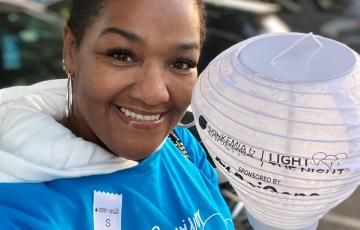
Kenya
I was diagnosed with two blood cancers — multiple myeloma (MM) and chronic myelomonocytic leukemia (CMML).
Cancer entered my life at five years old when I lost my father to pancreatic cancer. Then again, when my oldest sister was diagnosed with breast cancer, she is now nine years cancer-free. Then again, when my mother was diagnosed with breast cancer. Sadly, we lost my mother in May 2019 to breast cancer

Diane
Mary was diagnosed with acute myeloid leukemia (AML) in May 2016. After a few rounds of chemotherapy that were ineffective in fighting the AML, she was transferred to a hospital specializing in AML research and has been participating in a medical trial.
This involved 75 hours of high intensity chemotherapy. She then spent 54 days in the hospital attached to an IV cart.
Her latest check-up revealed a few "stragglers" that need to be eliminated before she can proceed to transplant.

Ellie
Because she did not have symptoms, Ellie's diagnosis of Acute Lymphocytic Leukemia (ALL) at age four was incredibly shocking. Just one month after diagnosis, she was discharged from the hospital, already in remission. She responded extremely well to chemotherapy and very rarely felt sick. Ellie is now a healthy, very active 11 year old and a competitive gymnast, practicing 20 hours a week. She loves to play softball, hang with her friends, and go to the beach. Ellie is thankful to everyone who participates in the Light The Night Walk and helps kids like her fight cancer.
Emma
My dad, Panos, was diagnosed with kidney cancer when I was in the fourth grade. His cancer progressed very fast, and he passed away in 2019. My mom, Tricia, was diagnosed with chronic lymphocytic leukemia (CLL) shortly after. She has had many doctor appointments during this time, and I am so excited to be able to support her through it all and help raise awareness! I’ve spent most of my life surrounded by cancer, growing up visiting my grandma and dad in the hospital at a young age, and I am hoping to make a change by raising money for research and more.

Jonathan
I had been feeling very tired and dealing with massive headaches for about a month. Friends and family started to notice my pale skin and that all I wanted to do was sleep, and I felt cold all the time. That’s not like me, and everybody knows that I don’t usually carry sweaters when it’s cold because I love the cold weather. But during this time, I felt very, very cold.

Anubha
I experienced extreme nausea and slight shortness of breath for a week prior to being diagnosed with acute promyelocytic leukemia (APL), clots in my lungs (PE), kidneys, and a valve of the heart on April 16, 2022.
I underwent intense treatment (induction phase) for 28 days and the consolidation phase for six months at Robert Wood Johnson University Hospital in New Jersey. My leukemia was treated with non-chemo drugs, ATRA and arsenic trioxide. With due thanks to the oncology team and nursing staff at RWJ, I am currently in remission.
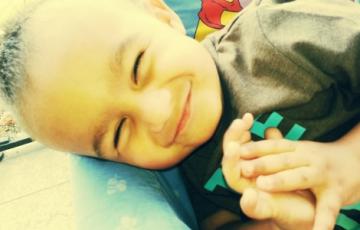
Blake
Blake was recently diagnosed with acute lymphoblastic leukemia (ALL), and is now in interim maintenance.
It all started with unexpected wrist and leg pain that turned into three years worth of treatments and procedures. We were told he was anemic so we took him in for iron supplements. He then got very constipated and had terrible side and tummy pains, which led us back into the ER. They gave us laxatives and sent us home.

Jania
In November 2018, I was diagnosed with acute myeloid leukemia (AML). It's a type of cancer of the blood and bone marrow that progresses very rapidly. When I was initially diagnosed, I believed my life was over. As a seventeen-year-old high school student attending school from a homeless shelter, going to bed hungry most nights, I considered dropping out to help my mother with my younger sister and brother. I couldn't fathom the financial burdens that would follow with medical treatment. I felt like the more I attempted to correct things, the worse they became.